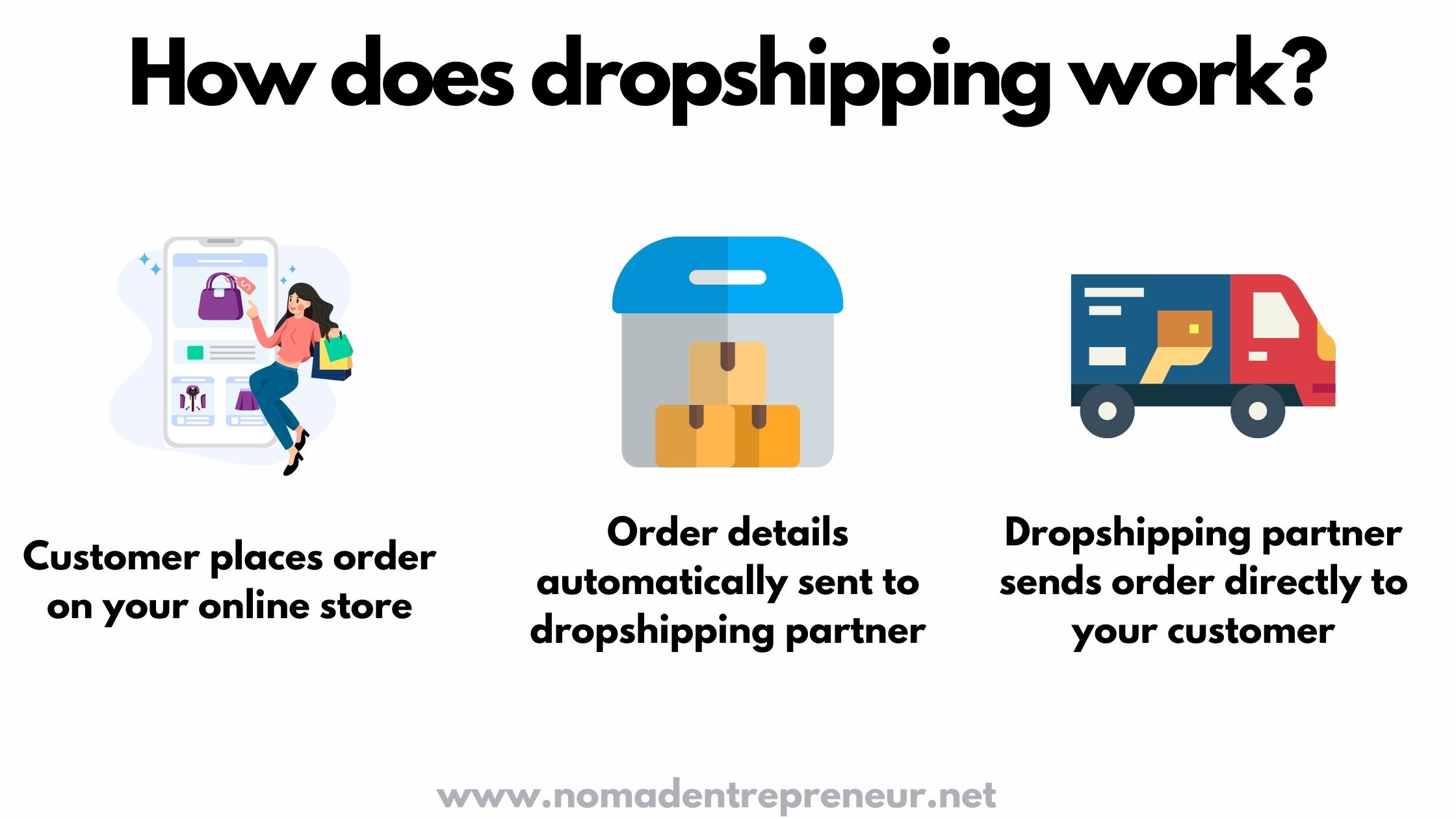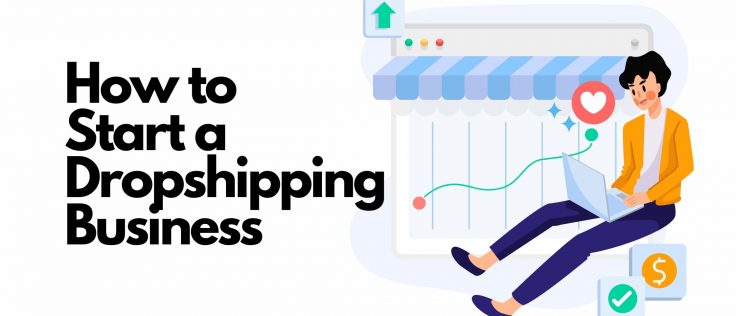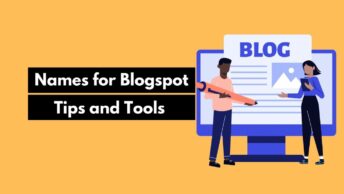Dropshipping business is a growing concept now. Previously you had to stock inventory if you wanted to sell products online, but now you can start a product-based business without even having your own physical inventory. Dropshipping has quickly become one of the most popular online business concepts and models. The benefit of dropshipping allows you to manage businesses without having a warehouse or full-time employees.
What is Dropshipping?
Shopify defines dropshipping as “a retail fulfillment method where a store doesn’t keep the products that it sells in stock. Instead, when a store sells a product, it purchases the item from a third party and gets it shipped directly to the customer. As a result, the merchant never gets to see or handle the product.” You can create and sell products without ever having to keep inventory in stock. Not having to buy and store the inventory is one of the best parts of starting a dropshipping business.

How to Start a Dropshipping Business in 8 Simple Steps
You don’t need weeks and months of planning for starting a dropshipping business. It requires a little determination and persistence, and you are ready to launch your business within a few days. Follow the below 8 simple steps and start your business.
1. Selecting a niche.
First, you’ll have to select a type of business or niche to start your business.
You can start your business with niches like health and beauty, fashion, electronics, outdoor living, children and toys, or household products, etc. At a beginner stage in dropshipping business, it’s important that you must be specific with your business strategy and idea before expanding your niche.
For example, if you are planning to start with the fashion industry, you should decide from the beginning if you’re going to sell children’s, men’s, or women’s clothing. Choosing a specific niche will help your dropshipping business focus on the right customer and target audience as you build your brand.
2. Pick a platform.
You can choose a number of platforms like eBay, Etsy, Amazon, or even your own website so that you can list the products to dropship. In order to reach a larger audience and expand your reach, you can list the same items on multiple sites. Another popular option is to go for Shopify. Integrating your Shopify account with your own website or even any third-party site from Etsy, which offers affordable options for new dropshippers? It also offers some premium features like abandoned cart targeted marketing.
Starting from the scrap, you can grow your business on your own website and use it to sell and grow an email list. Simultaneously, you can add up your products on sites like Amazon or eBay which will help to enhance your exposure. Be very careful and specific while choosing platforms. Choose platforms that are popular and reputable. It will help you expand because people search for them directly every day and they will come across your products.
3. Determine your product.
Once you are done with choosing your niche and the platforms, you must specify the products you want to sell. Do you want to sell wedding dresses, shirts, or toddler toys? Depending on your dropshipping suppliers, you might be able to list a whole line of items within your niche. Don’t get too excited and get carried away at first. Your goal should be to start small and cater to a particular audience. With time, you can expand your products and fill in the gaps within a broader niche.
4. Enhance your brand
If you do not wish to sell your products under another company’s brand, you will have to brand your items. You can choose to allow dropshipping under established brands, but choosing to start your own brand, you may have to struggle to scale your business in the long run. You can simultaneously grow your following on social media.
Create business accounts on various social media platforms for starters. Then start sharing relevant information on a daily basis. Consistency will make your brand get noticed. Social media platforms like Instagram, Facebook, and Pinterest will help you enhance your following. Find out where your target market spends the most time online and grow your social presence there. Remember to engage with your audience by being genuine and authentic. That will help them connect with and trust you and make them more inclined towards your products.
5. Research your competitors.
New dropshippers often overlook this step and fail to keep up with their competition. The online market is massive, but it’s not endless. Do a quick Google search to figure out who your competitors are. The people who come up in the first 10 searches are your biggest competition.
Have a close look at what your competitors are offering, this will help you wider your scope. Look at what extra they have which you can incorporate.
Use the data on their websites and analyze them. Learn from them but do not copy.
6. Choose your dropshipping suppliers.
Choosing reliable dropshipping suppliers can help you succeed. Make sure to research, test, and compare the products when possible.
If you’re dropshipping from outside of your resident country, then it becomes imperative that you see the product first. Getting a sample of the product can also be used for marketing. Add up this cost in your start-up budget.
Suppliers like Alibaba or Oberlo will help you a great deal for starting with dropshipping.
Research for manufacturers directly and find out which one works best for you. Some might also be willing to place your brand on the product and dropship directly to your customers. You can also choose to keep your brand on the product and have dropshippers market and sell them. This becomes helpful for new dropshippers to establish trust in their niche.
7. List your items
After you are done with choosing the product, suppliers, and a platform, then you must list your items online and start selling them. When you start listing the items on Shopify, Etsy, or any other platform, you’ll have to write a unique title, create detailed bullet points describing the product, and choose a competitive selling price for every item. This is where your competitor analysis comes in handy because that data can make your product listings better.
Dropshipping businesses can take weeks or even months to start off. So don’t get disheartened if it doesn’t start selling in a few days. Stay patient and determined during this stage.
8. Analyse your results and learn to improve
Your hard work doesn’t get over after your products are listed for sale. In dropshipping business, the competitors, demand, and product offerings always keep changing. Here you learn what works and what doesn’t. You have to continuously improve your dropshipping business in order to cater to your target audience and sell what they want. Listening to your audience and providing what they want is the best way to grow a successful dropshipping business.
Recommended Read: 10 smart ways to market your business online with a very low budget







